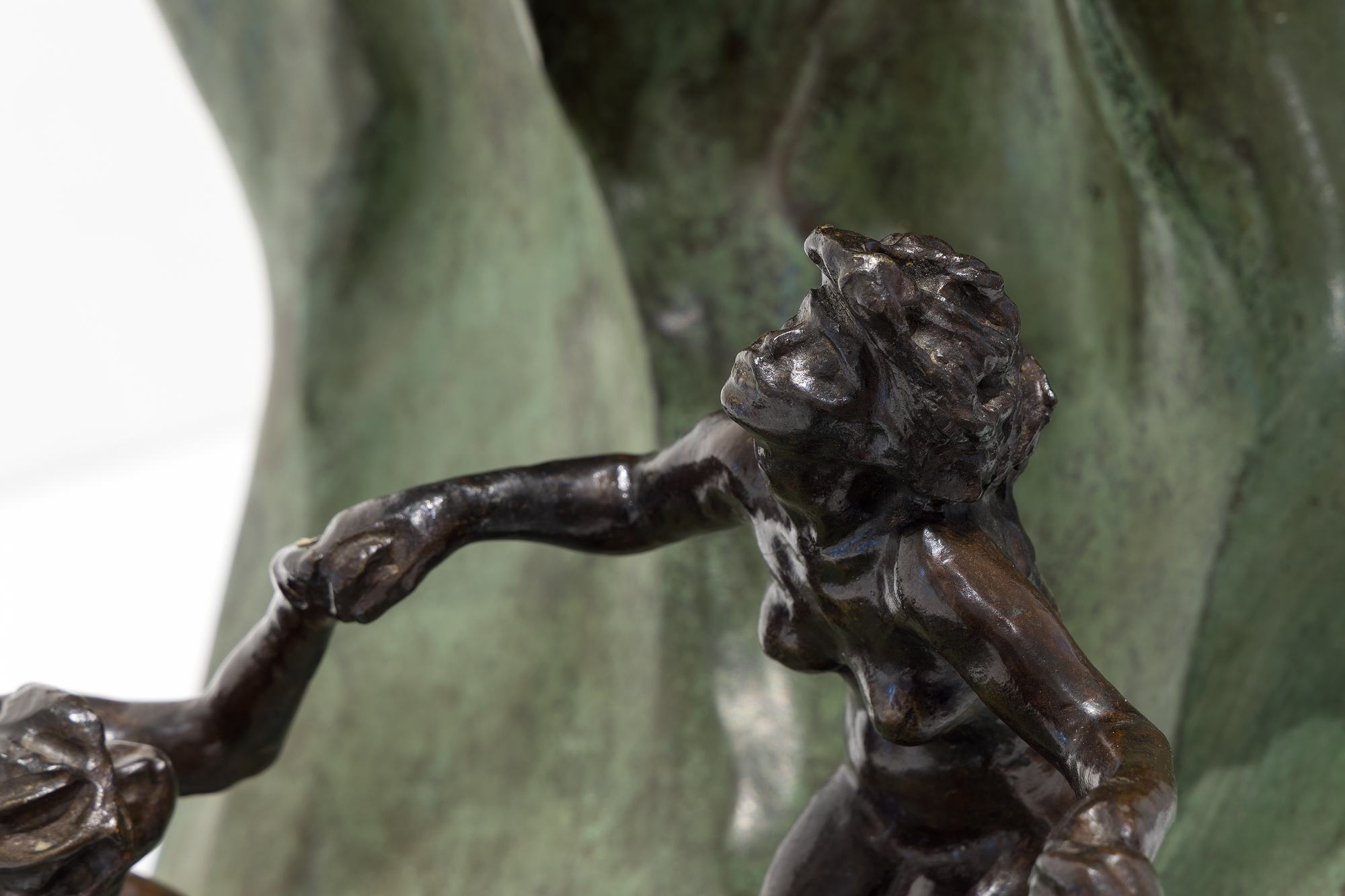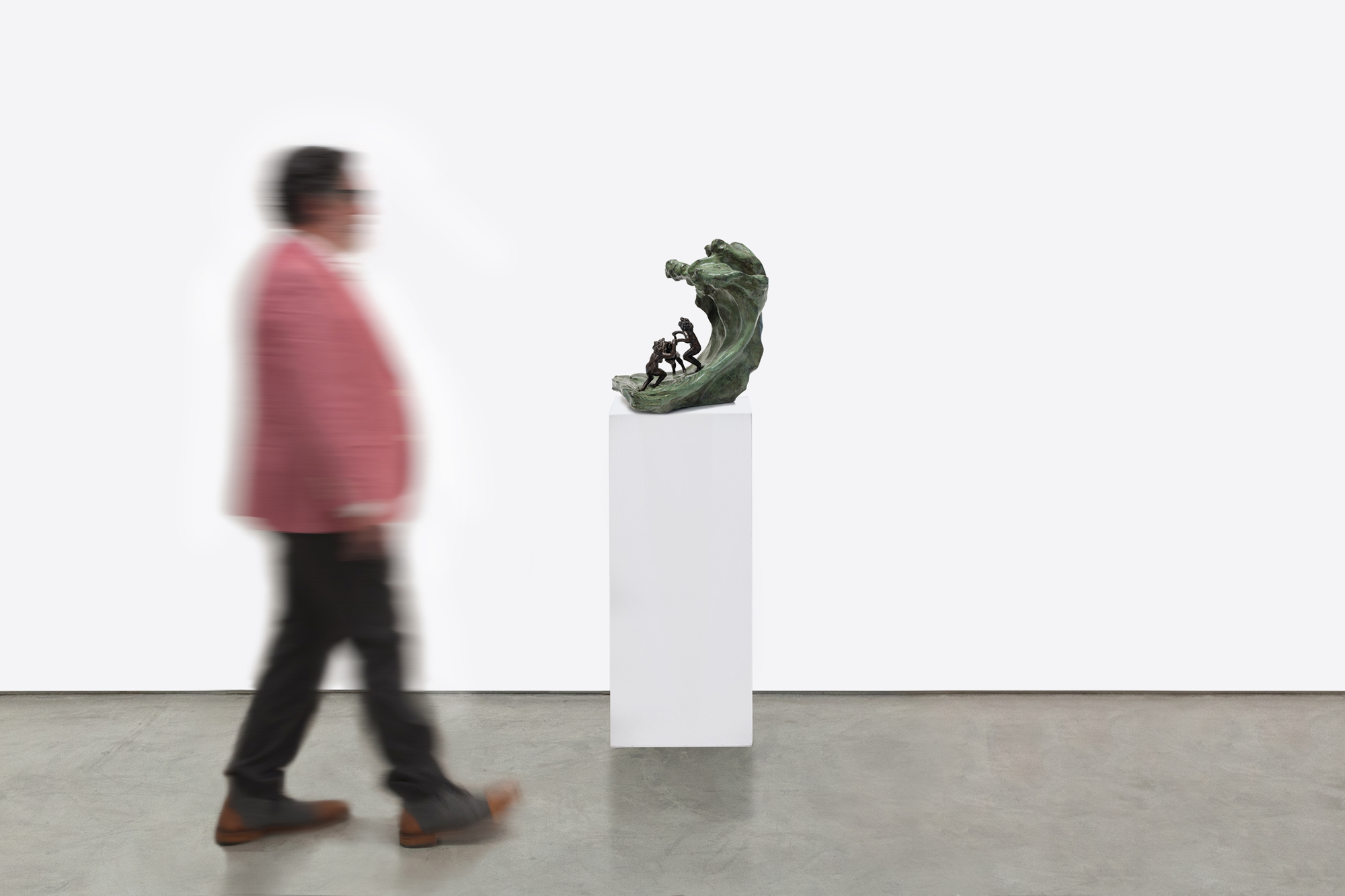CAMILLE CLAUDEL (1864-1943)







Provenance
Private Collection, FranceLiterature
Reine-Marie Paris & Philippe Cressent, Catalogue Raisonné de l'Oeuvre de Camille, Paris, France, 2019“La Vague (The Wave),” a remarkable sculpture of three women frolicking joyfully, embodies Claudel's passion for art and connection to nature. The women, their hair unruly like the sea, are depicted in a moment of freedom and abandon, yet the looming wave hints at the inevitable sorrow to come—a metaphor for Claudel's life, shadowed by fate. This piece, initially shown in plaster and later cast in bronze with an onyx marble wave, draws direct inspiration from Hokusai's “The Great Wave,” reflecting the Parisian fascination with Japanese art at the time. While “La Vague” showcases Claudel's technical mastery and the influence of Japanese aesthetics, it also poignantly symbolizes her acceptance of the overpowering forces of nature and the tragic course her life would ultimately take. This bronze, cast in 1997, is one of only two not held in a museum, further emphasizing the rarity of and reverence for Claudel's work.


